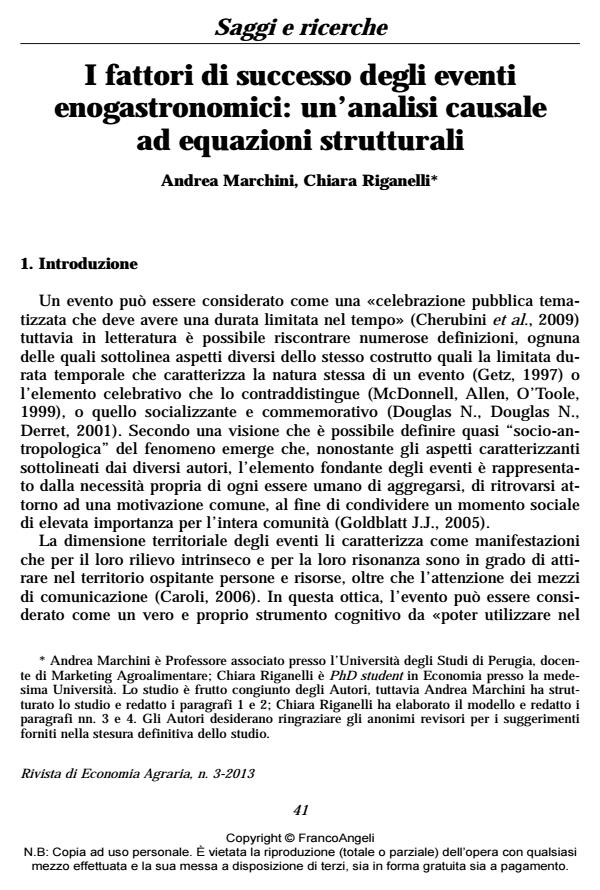I fattori di successo degli eventi enogastronomici: un’analisi causale ad equazioni strutturali
Titolo Rivista RIVISTA DI ECONOMIA AGRARIA
Autori/Curatori Andrea Marchini, Chiara Riganelli
Anno di pubblicazione 2014 Fascicolo 2013/3
Lingua Italiano Numero pagine 23 P. 41-63 Dimensione file 284 KB
DOI 10.3280/REA2013-003003
Il DOI è il codice a barre della proprietà intellettuale: per saperne di più
clicca qui
Qui sotto puoi vedere in anteprima la prima pagina di questo articolo.
Se questo articolo ti interessa, lo puoi acquistare (e scaricare in formato pdf) seguendo le facili indicazioni per acquistare il download credit. Acquista Download Credits per scaricare questo Articolo in formato PDF

FrancoAngeli è membro della Publishers International Linking Association, Inc (PILA)associazione indipendente e non profit per facilitare (attraverso i servizi tecnologici implementati da CrossRef.org) l’accesso degli studiosi ai contenuti digitali nelle pubblicazioni professionali e scientifiche
The objective of the study is to examine the complexity of the factors that determine the success of food and wine events. After surveying evidence on "event marketing", the authors have formulated hypotheses for a causal model and have collected data during the "Frantoi Aperti" ("Open Oil Presses") event in the Region of Umbria. Participants were interviewed and asked to express opinions about the importance and the interest of certain aspects directly linked to the theme of the event and, ultimately, to evaluate their level of satisfaction and their likely behaviour in the future. Statistical analysis based on a structural equation model allowed the authors to demonstrate which aspects are significant in confirming the hypotheses formulated. The results provide indications for choices concerning organization and management of the food and wine event.
Parole chiave:Eventi, turismo, oli di qualità, enogastronomia, Umbria, SEM
Jel codes:C30, O18, M20
Andrea Marchini, Chiara Riganelli, I fattori di successo degli eventi enogastronomici: un’analisi causale ad equazioni strutturali in "RIVISTA DI ECONOMIA AGRARIA" 3/2013, pp 41-63, DOI: 10.3280/REA2013-003003